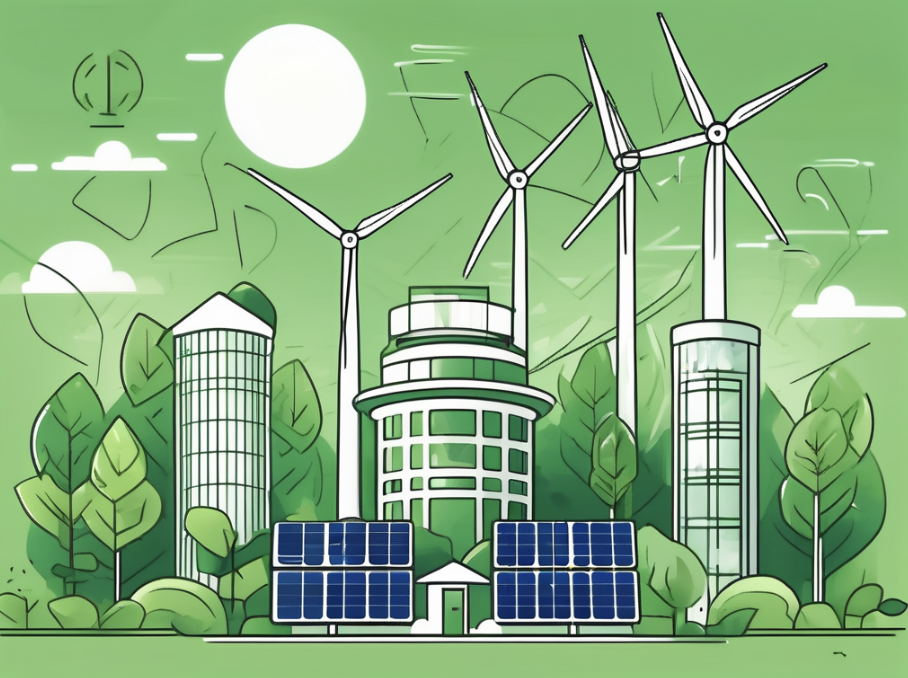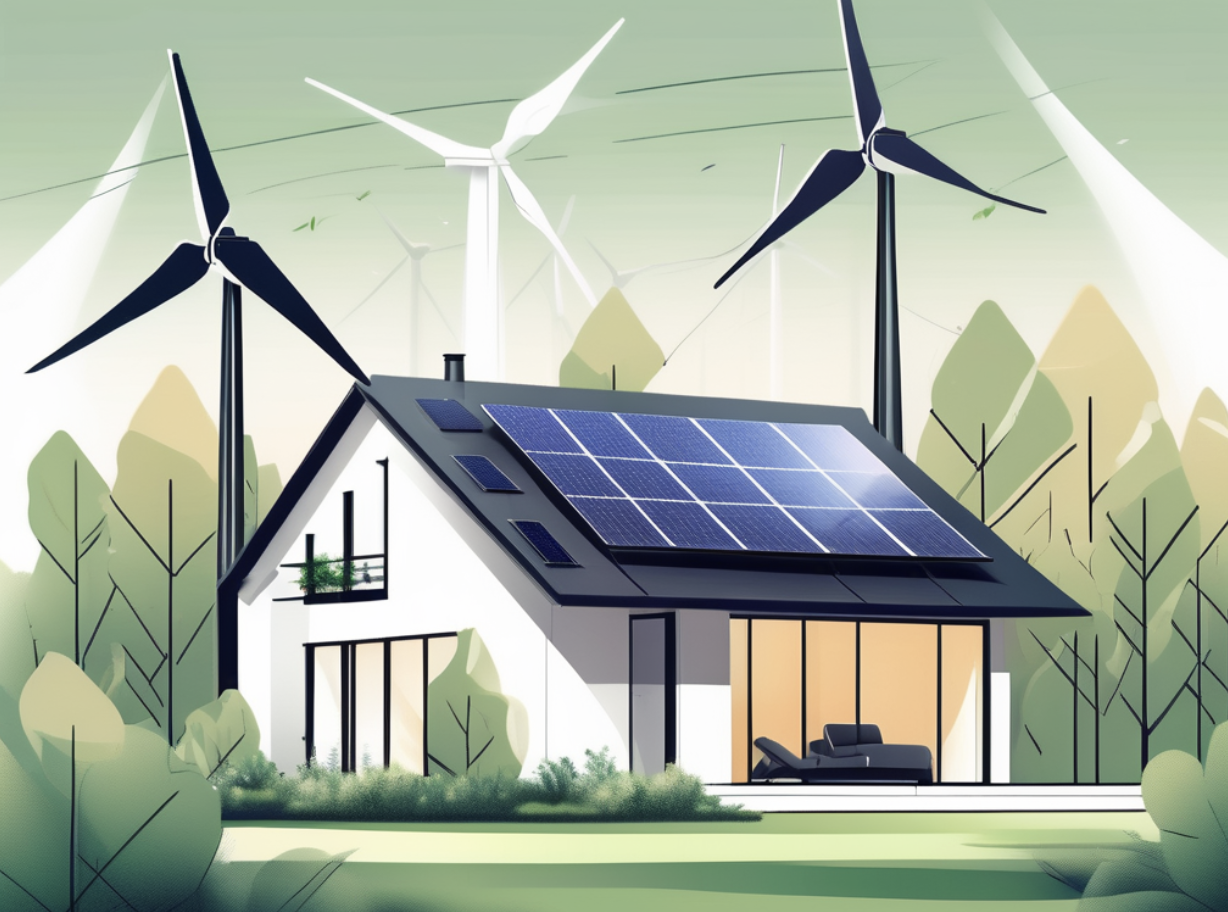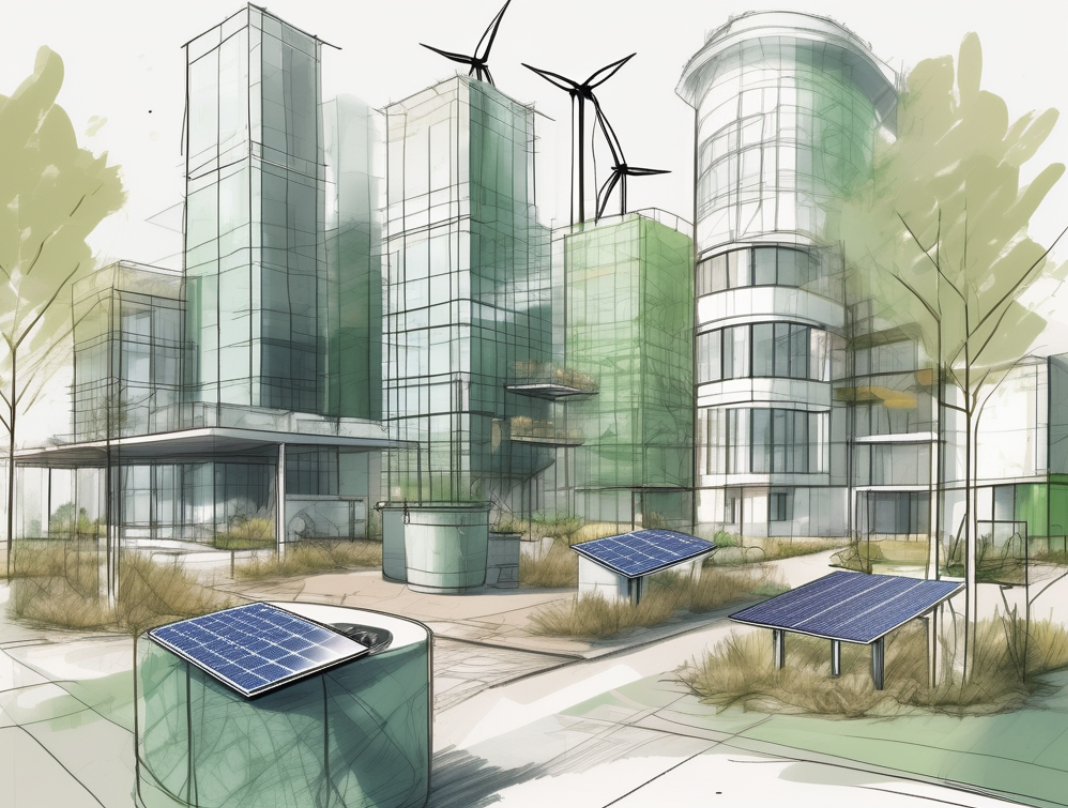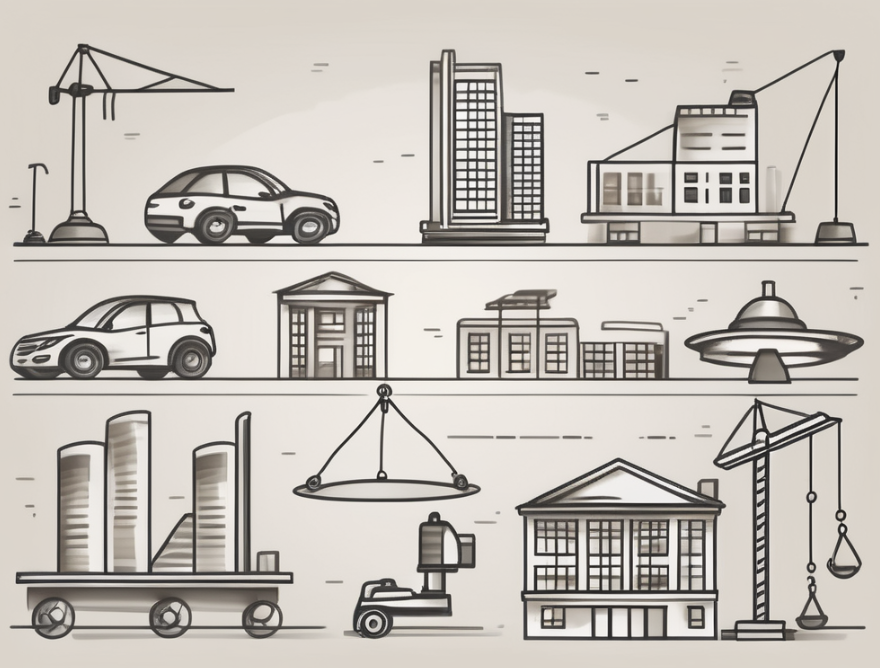Accounting for sustainability in Green Building
Accounting for sustainability in Green Building
Discover how accounting for sustainability plays a crucial role in green building practices.

Green building practices have gained significant attention in recent years due to their environmental and economic benefits. Sustainable construction not only helps reduce the carbon footprint but also provides long-term cost savings for building owners. Sustainability is important in green building success. It helps evaluate the environmental, social, and economic effects of these projects. By integrating environmental considerations into traditional accounting practices, professionals can provide comprehensive insights into the overall performance and value of green buildings.

The Importance of Sustainability in Green Building
The Importance of Sustainability in Green Building
Green building practices prioritize sustainability to ensure the conservation of natural resources and minimize environmental impacts. Unlike conventional construction, green buildings aim to reduce energy consumption, enhance indoor air quality, conserve water, and promote renewable materials. By incorporating sustainability principles, these buildings contribute to a healthier and more sustainable future. However, to effectively evaluate the success of green building projects, accounting practices must evolve beyond traditional financial reporting and consider the broader concept of sustainability.
One of the key aspects of sustainability in green building is energy efficiency. Green buildings are designed to minimize energy consumption by utilizing energy-efficient appliances, insulation, and lighting systems. These buildings often incorporate renewable energy sources such as solar panels or wind turbines to generate clean and sustainable power. By reducing energy consumption and utilizing renewable energy, green buildings help to mitigate the effects of climate change and reduce reliance on fossil fuels.
In addition to energy efficiency, green buildings also prioritize indoor air quality. Traditional construction materials and practices can release harmful pollutants into the air, leading to health issues for occupants. Green buildings use low-emission materials and implement proper ventilation systems to ensure a healthy indoor environment. This helps people feel better and is good for the environment.
Water conservation is another crucial aspect of sustainability in green building. These buildings implement various strategies to reduce water consumption, such as installing low-flow fixtures, utilizing rainwater harvesting systems, and implementing efficient irrigation methods. By conserving water, green buildings help to alleviate the strain on water resources and promote responsible water usage.
Furthermore, green buildings prioritize the use of sustainable and renewable materials. Conventional construction often relies on materials that are resource-intensive and have a significant environmental impact. In contrast, green buildings utilize materials that are responsibly sourced, have a lower carbon footprint, and can be recycled or reused. This reduces the depletion of natural resources and minimizes waste generation, contributing to a more sustainable construction industry.
While financial reporting has traditionally been the primary means of evaluating the success of construction projects, green building necessitates a broader approach. Sustainability reporting provides a comprehensive assessment of a building’s environmental, social, and economic impacts. It takes into account factors such as energy efficiency, water conservation, waste management, and occupant well-being. By incorporating sustainability reporting into accounting practices, stakeholders can gain a more accurate understanding of the overall sustainability performance of green building projects.
Understanding the Role of Accounting in Green Building
Understanding the Role of Accounting in Green Building
Accounting in green building goes beyond tracking financial transactions. It involves measuring, monitoring, and reporting on the environmental and social aspects of construction projects. By integrating sustainability metrics into accounting systems, professionals can evaluate the impact of resource consumption, waste generation, and emissions throughout the building’s life cycle. This ensures that the costs and benefits associated with sustainable practices are accurately captured and communicated.
When it comes to green building, accounting plays a crucial role in promoting transparency and accountability. By incorporating sustainability metrics into financial reporting, organizations can provide stakeholders with a comprehensive understanding of the environmental and social impact of their construction projects. This allows investors, regulators, and the general public to make informed decisions and support initiatives that align with their values.
One of the key aspects of accounting in green building is the measurement of resource consumption. Accountants can find and fix inefficiencies in construction by monitoring energy, water, and material usage, and implementing waste reduction strategies. This not only helps organizations save costs but also minimizes the environmental footprint of the building.
In addition to resource consumption, accounting in green building also involves monitoring waste generation. By accurately measuring and reporting the amount of waste produced during construction, organizations can identify opportunities for recycling, reusing, or reducing materials. This not only contributes to a more sustainable construction process but also helps organizations comply with waste management regulations and reduce landfill usage.
Furthermore, accounting professionals in green building are responsible for evaluating the emissions associated with construction projects. By tracking and reporting greenhouse gas emissions, organizations can assess the environmental impact of their activities and identify opportunities for improvement. This may involve implementing energy-efficient technologies, utilizing renewable energy sources, or adopting carbon offsetting strategies.
Accountants can assess the immediate costs and savings, as well as the long-term benefits, of sustainable features. These features include reduced operational expenses and increased property value. This allows organizations to make informed decisions, allocate resources effectively, and demonstrate their commitment to environmental and social responsibility.
Integrating Environmental and Financial Performance in Green Building Accounting
Integrating Environmental and Financial Performance in Green Building Accounting
Integrating environmental and financial performance in green building accounting provides a holistic understanding of a project’s sustainability. By considering both aspects, accountants can assess not only the immediate costs and savings associated with sustainable features but also the long-term benefits, such as reduced operational expenses and increased property value. This comprehensive approach enables stakeholders to make informed decisions regarding green building investments.
When it comes to green building accounting, it is crucial to recognize the interconnectedness of environmental and financial factors. By integrating these two dimensions, accountants can accurately evaluate the true value and impact of sustainable building practices. For instance, while the initial costs of incorporating energy-efficient systems or using eco-friendly materials may seem higher, the long-term benefits far outweigh the upfront expenses.
One of the key advantages of integrating environmental and financial performance in green building accounting is the ability to identify potential cost savings. By analyzing energy consumption patterns and implementing energy-efficient technologies, buildings can significantly reduce their operational expenses. This not only leads to lower utility bills but also contributes to a more sustainable future by reducing carbon emissions and dependence on non-renewable energy sources.
Furthermore, considering the financial implications of green building practices allows stakeholders to accurately assess the return on investment (ROI) of sustainable projects. Accountants can give a better financial analysis by considering the possible rise in property value from green certifications like LEED. This information is invaluable for investors, developers, and building owners who want to make informed decisions about their green building investments.
Another aspect to consider when integrating environmental and financial performance in green building accounting is the positive impact on occupant health and productivity. Green buildings are designed to provide a healthier and more comfortable indoor environment, which can lead to improved employee well-being and productivity. Green buildings use natural light, good ventilation, and safe materials to create a good environment for people. This reduces absenteeism and makes people happier at work.
Moreover, the integration of environmental and financial performance in green building accounting promotes transparency and accountability. By accurately tracking and reporting the environmental and financial performance of green buildings, stakeholders can hold themselves accountable for their sustainability goals. This not only enhances the credibility of green building projects but also encourages continuous improvement and innovation in sustainable practices.
The interconnectedness of environmental and financial factors in green building accounting allows for accurate evaluation of the true value and impact of sustainable practices. It enables the identification of cost savings, assessment of ROI, improvement of occupant health and productivity, and promotion of transparency and accountability. By embracing this holistic approach, we can pave the way for a greener and more sustainable future.
Tools and Metrics for Measuring Sustainability in Green Building Accounting
Tools and Metrics for Measuring Sustainability in Green Building Accounting
When it comes to measuring sustainability in green building accounting, there is a plethora of tools and metrics available that provide valuable insights into various aspects of a building’s environmental impact. These tools and metrics not only help in assessing the overall sustainability of a building but also aid in identifying areas for improvement and potential cost savings.
Measuring sustainability in green building accounting requires the use of various tools and metrics. Evaluating a building’s sustainability involves considering its life cycle, energy and water performance, occupant satisfaction, and community engagement.
One widely used methodology for measuring sustainability is Life Cycle Assessment (LCA). LCA evaluates the environmental impact of a building throughout its entire life cycle, from the extraction of raw materials for construction to its eventual demolition. It takes into account factors such as energy consumption, greenhouse gas emissions, water usage, and waste generation. By considering the entire life cycle, LCA provides a holistic view of a building’s environmental footprint.
Energy Performance Indicators (EPIs) are another essential tool in measuring sustainability. EPIs help assess a building’s energy efficiency by quantifying its energy consumption and comparing it to established benchmarks. These indicators take into account factors such as heating, cooling, lighting, and equipment usage. By analyzing energy consumption patterns, EPIs enable building owners and operators to identify areas where energy efficiency can be improved, leading to reduced energy costs and lower carbon emissions.
In addition to energy efficiency, water conservation is a crucial aspect of sustainability in green building accounting. Water Performance Metrics (WPMs) provide a framework for measuring and evaluating a building’s water usage and conservation efforts. These metrics consider factors such as water consumption, rainwater harvesting, greywater recycling, and water-efficient fixtures. By monitoring and optimizing water usage, WPMs contribute to reducing water waste and promoting sustainable water management practices.
However, sustainability in green building accounting goes beyond just environmental considerations. Social impact indicators play a vital role in assessing the overall sustainability of a building. Occupant satisfaction surveys are one such indicator that measures the satisfaction and well-being of the building’s occupants. These surveys capture feedback on factors such as indoor air quality, thermal comfort, lighting, and noise levels. By understanding occupant needs and preferences, building owners can make informed decisions to enhance occupant comfort and productivity.
Furthermore, community engagement assessments are another important social impact indicator. These assessments evaluate a building’s interaction with the surrounding community and its contribution to social well-being. Factors such as job creation, local economic development, and community outreach initiatives are considered in these assessments. By actively engaging with the community, green buildings can foster positive social change and contribute to the overall sustainability of the area.
Key Principles of Sustainable Accounting in Green Building
Key Principles of Sustainable Accounting in Green Building
In order to ensure effective accounting for sustainability in green building, several key principles must be followed. Transparency and disclosure are essential, as stakeholders need access to accurate and reliable information. Materiality, relevance, and credibility of sustainability indicators enhance decision-making. In addition, accountants should consider the specific needs and priorities of stakeholders, as well as the integration of internationally recognized sustainability frameworks and standards.
Transparency and disclosure play a crucial role in sustainable accounting for green building projects. Transparency gives stakeholders reliable info, making decision-making fair and informed. It allows investors, regulators, and the public to assess the environmental and social impact of a project, thereby promoting accountability and responsible business practices.
Materiality is another key principle in sustainable accounting. It emphasizes the importance of focusing on sustainability indicators that are relevant and significant to the project and its stakeholders. By identifying and prioritizing the most material indicators, accountants can provide a comprehensive view of the project’s environmental and social performance, enabling better decision-making and resource allocation.
Relevance is closely related to materiality and involves selecting sustainability indicators that are meaningful to stakeholders. Accountants can customize information for stakeholders by understanding their needs and priorities. This helps build trust and engagement among stakeholders, fostering a collaborative approach to sustainable development in the green building sector.
Credibility is vital in sustainable accounting, as it ensures that the information presented is accurate, reliable, and verifiable. Accountants should adhere to recognized accounting principles and standards to enhance the credibility of sustainability reports. By using internationally recognized frameworks, such as the Global Reporting Initiative (GRI) or the Sustainability Accounting Standards Board (SASB), accountants can provide standardized and comparable data, facilitating benchmarking and performance evaluation.
Furthermore, accountants should consider the integration of internationally recognized sustainability frameworks and standards in their accounting practices. These frameworks provide guidelines and metrics for measuring and reporting sustainability performance. Accountants can use these frameworks to compare and analyze green building projects easily. This leads to better decision-making.
The Benefits of Incorporating Sustainability in Green Building Accounting
The Benefits of Incorporating Sustainability in Green Building Accounting
Incorporating sustainability in green building accounting brings numerous benefits. It provides a comprehensive evaluation of a building’s environmental and social impacts, allowing stakeholders to make informed decisions. Moreover, accounting for sustainability helps identify potential areas for improvement, leading to more efficient resource management and cost savings over time. It also enhances stakeholder trust and fosters a positive reputation for building owners, investors, and developers.
Challenges and Limitations of Accounting for Sustainability in Green Building
Challenges and Limitations of Accounting for Sustainability in Green Building
Despite the benefits, accounting for sustainability in green building presents challenges and limitations. The lack of standardized frameworks and metrics makes it difficult to ensure consistency and comparability across projects. Measuring social impacts and assigning financial values to non-monetary outcomes also poses challenges. Moreover, the integration of sustainability into accounting systems requires specialized expertise and collaboration among professionals from various fields, including accounting, engineering, and environmental sciences.

Conclusion
Accounting for sustainability in green building is essential for assessing the full value and impact of sustainable construction practices. By expanding traditional accounting practices to incorporate green building considerations, professionals can provide detailed insights into the environmental, social, and economic performance of projects. This comprehensive evaluation ensures that the benefits of sustainable practices are accurately captured and communicated, contributing to a more sustainable future.
It All Starts With a FREE consultation!
Every client’s needs are unique and require varying amounts of time and attention. You can use this form to let us know what you’re looking for, and we’ll reach out to you to schedule an appointment and talk about rates for your business needs.
Please be as detailed as possible with what work is needed, what industry your business is in, and where you are located.
Our team will contact you with in 2 business days to set up the first meeting. We will make sure all your needs are taken into account when selecting the package and type of services you need.







Stay In Touch